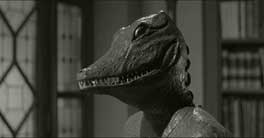8º centenario della morte di San Narsete Shnorali
25L Chiesa di S.Hripsime - Church of S.Hripsime
90L Khatchkar armeno - Armenian khatchkars
180L San Narsete Shnorali - San Narses Shnorali
Biography:
St. Nerses was born in 1102, his father being Prince Abirad and his grandfather, the great
church writer, Krikor Makisdros. He studied under Stepanos Vartabed in Garmir (Red)
Monastery and was ordained at 18 years of age by his brother, Catholicos Krikor III
Balavouni in the City of Hromgla. By the age of thirty, he was consecrated a bishop. He
served as the personal aide and right hand man to his brother, the Catholicos, whom he
succeeded in 1166.
Merely to list all St. Nerses' works would be a tedious task. He is most famous for his '
General Epistle' which was directed to the Armenian people, eloquently guiding them in
their faith, for his many letters, orations, poems, such as "Lament for Edessa," a moving
masterpiece on the destruction of that city, commentaries and ecclesiastical studies. A great
musician as well as writer and poet, St. Nerses enriched the Book of Hours with many songs
and the Book of Sharagans with a wealth of sacred hymns, adding almost a third to their
number. His book, Jesus, Son is used by devout Armenians and is second only to Nareg. St.
Nerses was an ecumenist as well as an astute theologian and beloved leader. The title
'graceful' was previously an educational rank but Nerses added a new dimension to that title
and is remembered for his loving nature and paternal care of his flock, the members of the
Armenian Church. Along with St. Gregory of Nareg, he is a pillar of Armenian literature,
especially of the Silver Age. St. Nerses is perhaps the most beloved of all Armenian saints
and is respected not only nationally but also universally. His final resting-place has been a
place of pilgrimage for all Christians without distinction who referred to him as "Lord
Nerses."
from Armenian catholic church(armcatholicchurch.com)


































